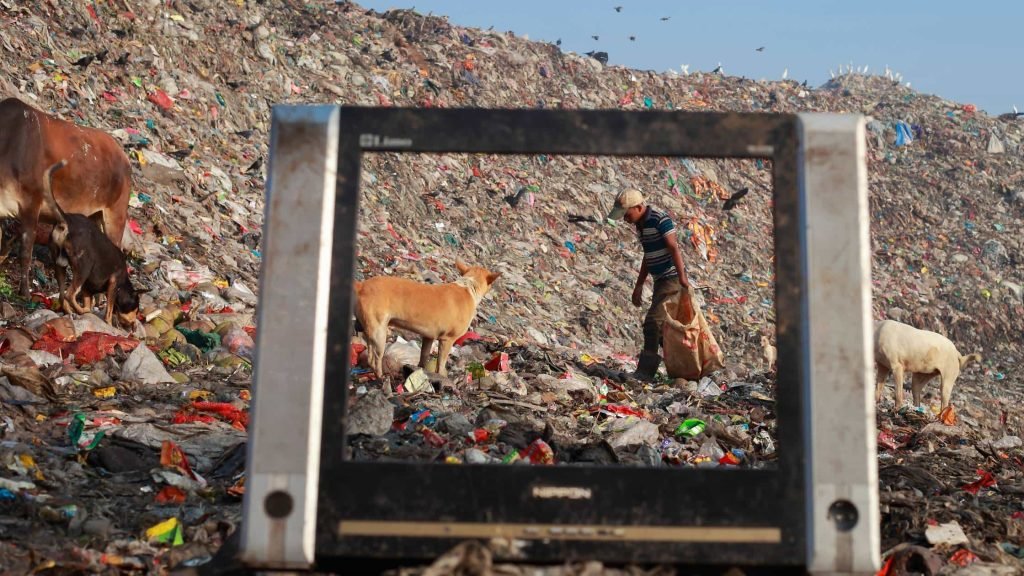Pollution can simply be termed as the introduction of harmful materials into the environment. These harmful materials are called pollutants, which can be chemicals or harmful substances that harm our nature. Pollution can be caused by various reasons which include natural causes like Volcanic ash, or man-made causes like, waste from factories, burning of hazardous waste, plastic processing, smoke from vehicles, or burning of fuels. These things in turn cause damage to the quality of Land, Air & Water.
Many of the things that are a part of our day-to-day life are also reasons for increasing pollution. Cars release harmful smoke from exhausts, burning coal on a large scale to produce electricity, waste produced by industries as well as homes which are disposed off through garbage. Farming techniques have also changed a lot over the years which now include high usage of chemical fertilizers & pesticides to keep away pests from crops which is causing a slow but long-term hazardous effect on soil & polluting fertile lands.
Why should we be alarmed?
All living things are part of the same ecosystem and live in correlation with each other. Every organism which is a part of this ecosystem depends on Earth’s supply of Land, Water & Air, and when these supplies get contaminated or polluted all life forms dependent on these supplies get threatened.
Pollution is a global concern and is not restricted to a particular place or geographical boundary. Although urban areas are mostly polluted due to vehicles & industrial exposures, rural areas are not that far behind because of the use of chemical fertilizers & pesticides. The spread of pollution cannot be controlled once emitted into the environment & can also reach remote areas where there is no human life is to be found. Air & Water are the two mediums which are widely affected by pollution & due to their abundance in our environment are quick in spreading that too on a large scale.
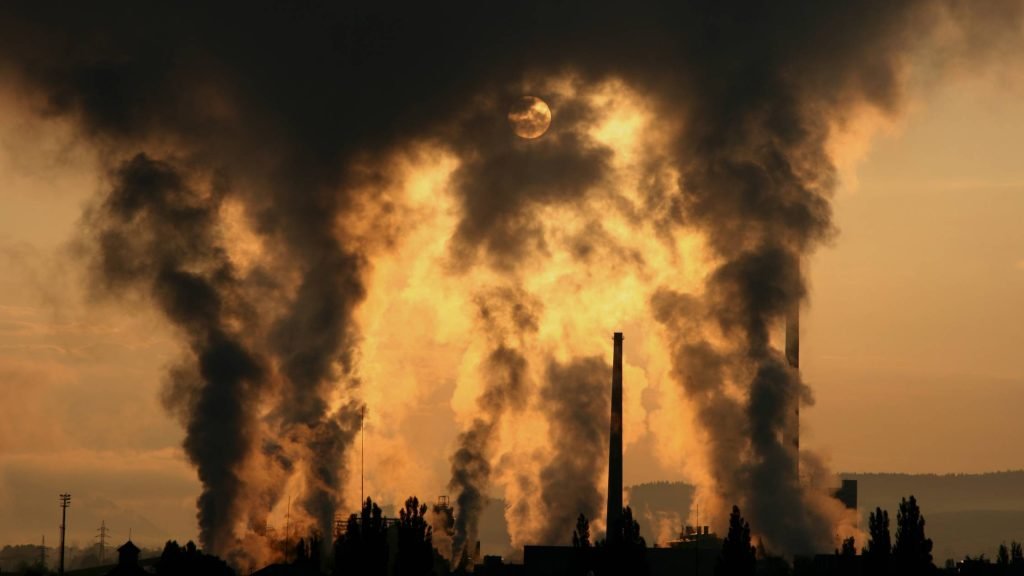
Types of Pollution
There are three major types of pollution:
1. Air Pollution
2. Land Pollution
3. Water Pollution
Air Pollution
Air pollution is most commonly experienced by us in our day-to-day lives. As soon as we enter urban areas, areas with high traffic, factories, industries, etc. we start experiencing multiple symptoms like, irritation in the eyes, coughing, skin rash etc.
Sometimes air pollution can be seen with our naked eyes, and even when not visible, the harmful & toxic pollutants that have contaminated the air are present and are adversely affecting our health. Air pollution also significantly increases the chances of lung cancer.
Major causes of air pollution:
1. Burning fossil fuels
2. Burning coal
3. Carbon monoxide from vehicles
4. Industrial residues after burning materials.
Land Pollution
Land pollution can be defined as the change in the natural composition of the soil environment due to external factors. Harmful chemicals used nowadays can be said as the major cause of inducing harmful pollutants in the land.
Land pollution does not immediately affect the living organisms but it is a slow yet deadly process. The pollutants once released in land become a part of the ecosystem and they affect every living component on the earth.
Major causes of land pollution:
1. Industrial waste
2. Agriculture (Use of chemical fertilizers & pesticides)
3. Improper disposal of waste
Water Pollution
Water is an essential element for life to sustain & when this source gets polluted it has large-scale effects on life. Water pollution can sometimes be seen with eyes like changes in color, muddy water, chemicals or substances floating on water, etc.
However, many a time the water looks clean but is filled with harmful chemicals which we neither can see or smell. The pollutants present in water can also affect us indirectly.
Major causes of water pollution:
1. Oil & natural gas leaked in water bodies
2. Chemical waste from factories
3. Mining & drilling
Alarming Air Pollution Facts
1. 9 out of 10 individuals inhale contaminated air.
2. Around 7 million individuals experience death each year from air contamination.
3. Ozone-harming substance emanations in the EU diminished by 22% somewhere in the range of 1990 and 2016.
4. IPCC states that human-caused outflows of carbon dioxide need to fall 45% from 2010 levels by 2030 and arrive at net zero around 2050.
5. Air contamination is the fourth biggest danger to human well-being.
6. WHO rules state yearly normal convergences of PM2.5 ought to be under 10 micrograms (mcg) per cubic meter.
7. Air contamination cleaves 6.6% off China’s Gross domestic product every year.
8. Of the world’s 20 most dirtied urban communities, 18 are in China.
9. Air contamination kills a greater number of individuals than firearms and fender benders set up in the US.
10. Openness to air contamination isolates along racial lines in America, with Hispanic and dark Americans confronting a lot more serious dangers.
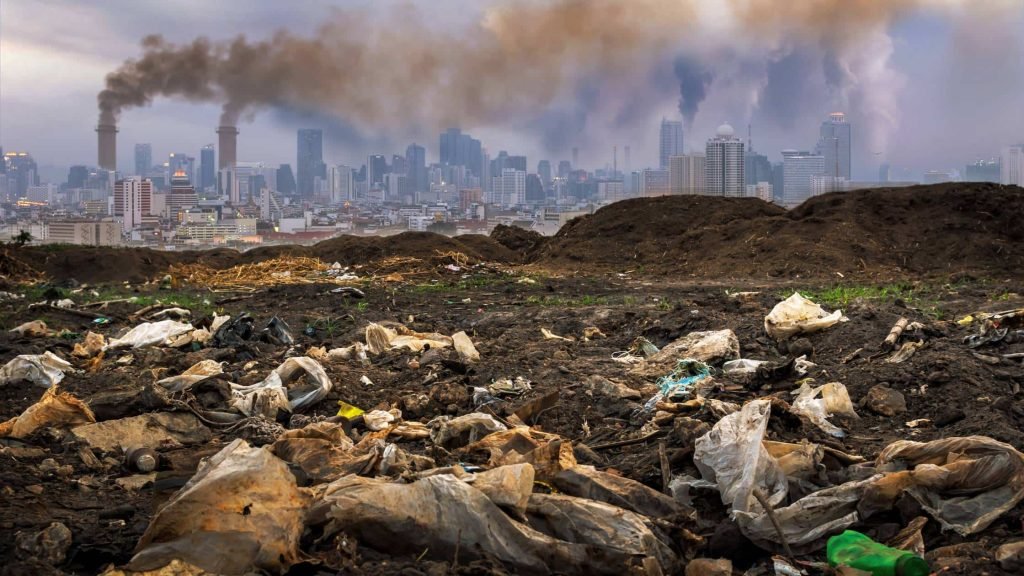
11. Particulate contamination in China dropped by 29% in 6 years or less.
12. A kid conceived today probably won’t inhale clean air until they are 8.
13. Breathing contaminated air can decrease life years by as long as 2 years.
14. Air contamination in Beijing has raised to a level that people living there currently have a trademark sickness called “Beijing hack”.
15. The European Association has paid 160 Billion Euros for deaths connected with air contamination.
16. Around 70% of the air contamination in urban areas of China is a result of exhaust pipes.
17. There are around 2 million vehicles in Manila, the Philippines, which cause as much as 80% of the air contamination around there.
18. Discharges from diesel motors are Class 1 cancer-causing agents.
19. India, China, Bangladesh, and Pakistan represent the 50 most dirtied urban communities on the planet with regard to air contamination.
20. In Europe, around 90% of smelling salt discharges are because of horticultural contamination.
21. Aside from man-made causes, regular causes like volcanic emissions, fierce blazes, and dust storms can likewise add to air contamination.
22. Air contamination kills more than 1 million seabirds yearly.
23. From China, air contamination is venturing out up to the Focal Valley of California.
24. Utilizing an indoor air purifier can help eliminate 99.97% of indoor air poisons.
25. 630 million kids under 5 years of age are presented to air contamination beneath WHO’s quality rules.
26. Cellular breakdown in the lungs is answerable for around 6% of outside air contamination deaths.
27. 91% of the world encounters outside air contamination.
28. In many pieces of the US, air contamination has diminished the distance of perceivability by practically 70%.
29. The smallest of the airborne particles in the air can enter our lungs through our circulatory system and can cause a few lethal sicknesses.
30. As indicated by EPA reports, carbon dioxide represents a sum of 81% of the ozone-harming substance emanations, while methane represents roughly 11%.
31. Deforestation bothers air contamination as well. With a diminished number of plants and trees to retain the destructive carbon dioxide outflows for photosynthesis, the degree of air contamination increments complex.
32. At the point when vehicles sit inactive in rush hour gridlock, contamination of the time leak within your vehicle. This stagnation can make the air inside your vehicle up to multiple times more awful than the air beyond your vehicle.
33. The air poisons making brown haze have likewise been tracked down in the lungs of dolphins, causing dark lung illness.
34. Voyagers to the Stupendous Ravine now and again can’t see across the gulch due to air contamination that is created from more than 1000 miles away.
35. Pneumonia and ischemia coronary illness are the most well-known reasons for sudden passing welcomed on by indoor air contamination.
36. The US’s air quality patterns appear to have worked cross-country in the past forty years, as per air contamination measurements from the US.
37. The American indoor air quality market ought to hit $12.2 billion continuously in 2023.
Alarming Land Pollution Facts
1. Over 75% of the land area on Earth is degraded.
2. If the current land pollution trend persists, the percentage is estimated to rise to 95% by 2050.
3. Some 3.2 billion people worldwide are negatively affected by contaminated land.
4. Globally, we’ve lost about 87% of wetlands to land degradation since 1900.
5. In 2018, Each person, on average, generated 5.2 tonnes of waste across the EU-27.
6. Of the total waste generated in the U.S. in 2018, food waste was the fourth largest category, at about 63.1 million tonnes.
7. Half of the world’s population does not have access to proper waste disposal systems.
8. 60 million people live less than 10 kilometers away from the world’s largest dumping sites.
9. Of the 50 largest dumping sites globally, 20 contain both solid municipal waste and hazardous waste products.
10. One of the largest dumping sites in the world is called the Estrutural landfill. It is in Brasilia, Brazil, and covers about 136 hectares of land.
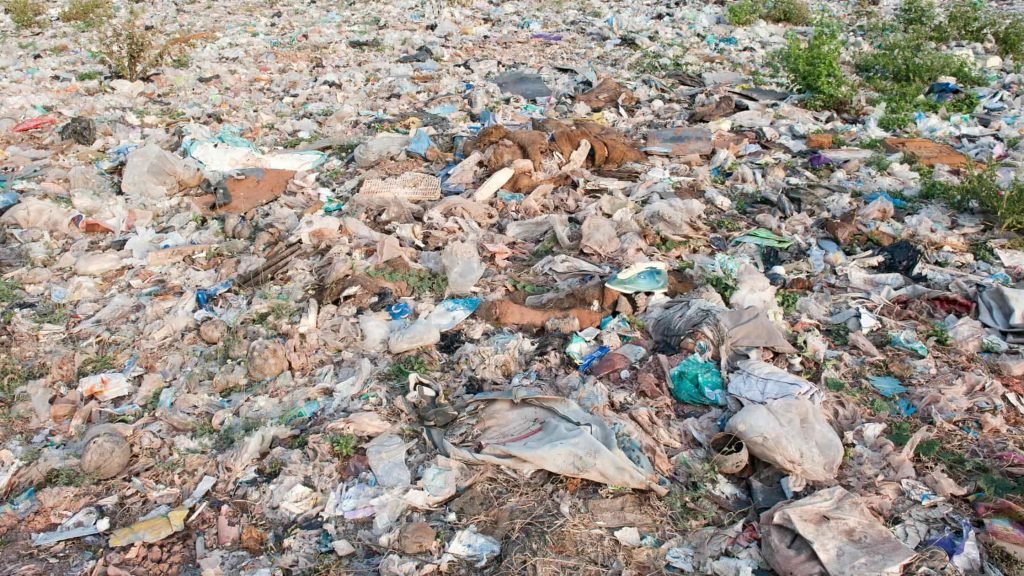
11. The Estrutural landfill in Brazil has been active for over 50 years.
12. The Estrutural landfill in Brazil alone has collected an estimated 30 million metric tonnes of waste over time, with a daily average estimate of 2 million metric tonnes. Beyond the horrible state of the land, this site has seen many accidents and death reports.
13. Results from San Francisco prove we can divert up to 80% of urban waste from landfills.
14. Researchers found open landfills to be responsible for 91% of all methane emissions, which poses serious health risks for those who live close to them.
15. In China, 20.8% of soil poses a risk of cancer in children.
16. About 700,000 deaths yearly are attributable to bacteria from soil pollution.
17. If not curbed by 2050, researchers estimate that soil pollution would kill more people than cancer.
18. In 2017, the U.S. produced 268 million tonnes of waste. By 2018, the number rose to 292.4 million.
19. There are about 1270 landfills in the United States alone.
20. The U.S. land filled about 50% of the municipal solid waste it generated in 2018.
21. Of the 292.4 million tons of waste generated in 2018, the U.S. recycled 69 million tonnes of municipal solid trash.
22. The 69 million tons of recycled municipal solid waste in 2018 was a 2.2% increase from the amount recycled in 2015.
23. In 2018, the rate of food and other MSW organics composting was 4.1 percent (2.6 million tons).
24. The U.S. composted 25 million tons of municipal solid waste in the U.S. in 2018.
25. The combined rate of recycling and composting of waste in 2018 amounts to 32.1%.
26. The total recycling, composting, and energy recovery of waste in 2018 saved over 193 million metric tonnes of carbon dioxide.
27. The combined recycling, composting, and energy recovery of waste in 2018 is equivalent to reducing the cars on roads by 42 million.
28. 67% of the materials recycled in 2018 in the U.S. were paper and paperboard.
29. 13% of recycled materials in the U.S. in 2018 were metals.
30. Glass, wood, and plastic made up only 4-5% of recycled materials in the U.S. in 2018.
31. Paper and paperboard recycling was responsible for the largest municipal solid waste reduction in 2018. This equates to removing 33 million cars from roads.
Alarming Water Pollution Facts
1. Agriculture uses 70% of the earth’s water supplies.
2. One million tons of oil go into the ocean from land sources.
3. 70% of industrial waste in developing countries is disposed of in untreated waters.
4. About 40% of US fishing and swimming lakes are too polluted for humans.
5. Unsafe drinking water and poor sanitation in Africa cause 115 deaths an hour.
6. Half of the Chinese population doesn’t have access to safe water.
7. 80% of India’s water is polluted.
8. 844 million people don’t have access to a clean water source.
9. 80% of the world’s wastewater is released back into the environment.
10. Agriculture is the most significant source of contamination in US rivers and streams.
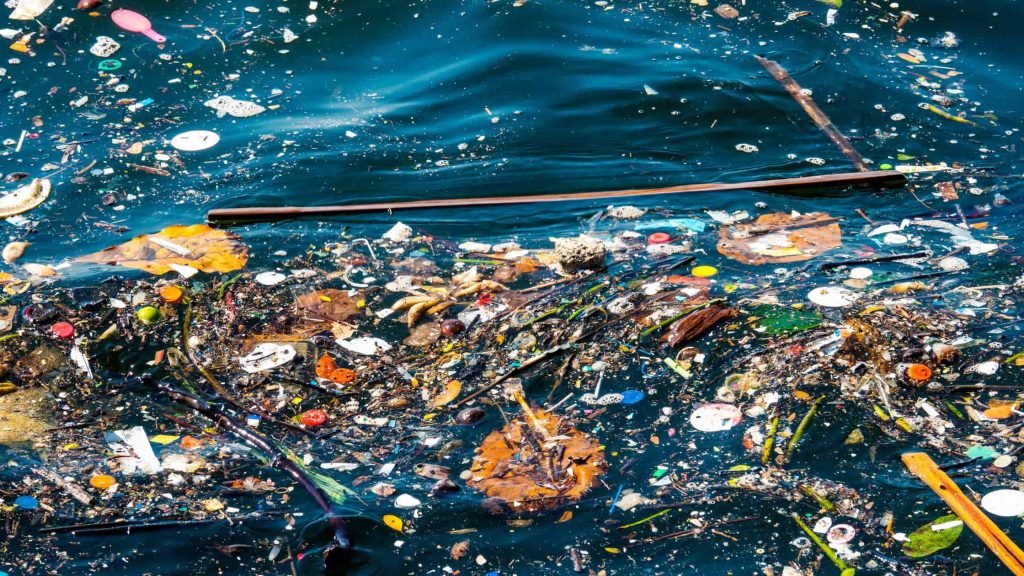
11. Nutrient pollution is one of the most widespread types of water pollution in the world.
12. There are some 500 “dead zones” where no living organism can live.
13. One of the most significant “dead zones” forms every year in the Gulf of Mexico.
14. Oil spills only account for 12% of oil entering the seas every year.
15. Over 2.5 million acres of ponds, reservoirs, and lakes are unsafe due to nutrient pollution, according to the water pollution statistics.
16. At the height of the Flint water crisis, lead levels in tap water were 25 times over the legal limit.
17. Ohio River pollution facts show that it is the most polluted river in the USA.
18. Over half of the trash in the Great Pacific Garbage Patch comes from land-based sources in North America and Asia.
19. 18 billion pounds of plastic waste go into the world’s oceans every year.
20. In some of the most polluted areas of oceans, there is six times more plastic than plankton.
21. 100,000 marine mammals die annually because of, plastic pollution.
22. Around one million seabirds die from ocean litter.
23. One in three marine mammal species become entangled in marine debris
24. Fishing gear in the oceans accounts for 10% of all marine debris.
25. Ghost fishing is one of the main reasons for the decline of the Hawaiian monk seal population.
26. Around 47% of people in the world will be living in water-stressed areas by 2050.
27. High levels of nitrates in the water are the most common cause of “blue baby syndrome.”
28. The Mississippi River carries an estimated 1.5 million metric tons of nitrogen pollution into the Gulf of Mexico each year, creating a “dead zone” in the Gulf each summer about the size of New Jersey.
29. Approximately 40% of the lakes in America are too polluted for fishing, aquatic life, or swimming.
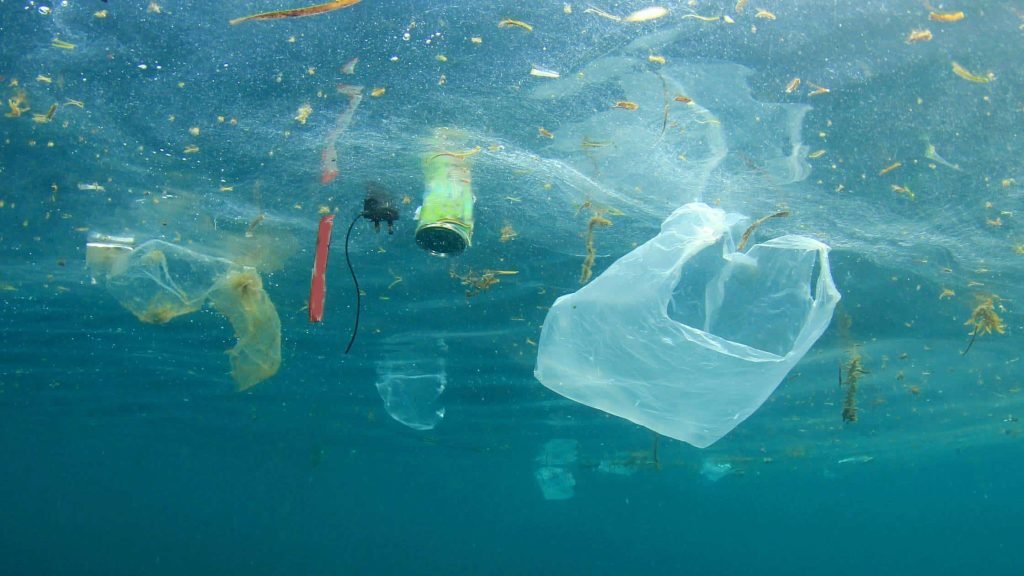
30. Each year 1.2 trillion gallons of untreated sewage, storm-water, and industrial waste are dumped into US water.
31. Every day, 2 million tons of sewage and industrial and agricultural waste are discharged into the world’s water (UN WWAP 2003), the equivalent of the weight of the entire human population of 6.8 billion people.
32. Tens of millions of people in Bangladesh have been exposed to poisonous levels of arsenic from contaminated groundwater.
33. In developing countries, 70 percent of industrial waste are dumped untreated into waters, polluting the usable water supply.
34. More than 80% of sewage in developing countries is discharged untreated, polluting rivers, lakes and coastal areas.
35. About 10% of America’s beaches fail to meet the federal benchmark for what constitutes safe swimming water.
36. Federal authorities estimate that the headwaters of 40 percent of Western rivers are tainted with toxic discharge from abandoned mines.
37. The annual discharge of sewage and industrial waste in the Yangtze River has reached about 25 billion tons.
38. Industry dumps an estimated 300-400 MT of polluted waste in waters every year.
39. Nitrate from agriculture is the most common chemical contaminant in the world’s groundwater aquifers.
How is pollution affecting the Polar Ice Caps – The Arctic & Antarctica
The polar ice caps are large masses of ice that cover the polar regions of the Earth – the Arctic in the northern hemisphere and the Antarctic in the southern hemisphere. The ice caps store large amounts of frozen freshwater. The polar ice caps cover about 10% of the planet and are an estimated 70% of our freshwater supply. They also play an important role in global climate by reflecting sunlight back into space and cooling the planet.
Unfortunately, increasing average global temperatures have resulted in a gradual and worrisome change in our polar regions. The melting of the polar ice caps has a direct impact on the planet’s climate. This includes global temperature, greenhouse gases, sea level, international trade, coastal communities, and wildlife.
Polar Ice Caps Melting
The polar ice caps are melting due to global warming caused by human activity. This is causing a rise in global sea levels, leading to flooding in coastal areas and disruption of coastal ecosystems. It is also affecting global climate patterns, leading to more extreme weather events and changes in the availability of certain species of fish and other marine life. Additionally, the melting of the polar ice caps is also causing the release of methane and other greenhouse gases that were previously trapped in the ice, further exacerbating the effects of global warming.
Cause of Polar Ice Caps Melting:
- Burning of fossil fuels
- Deforestation
- Volcanic Eruptions
- Oil & Gas Drilling
Impacts of Polar Ice Cap Melting
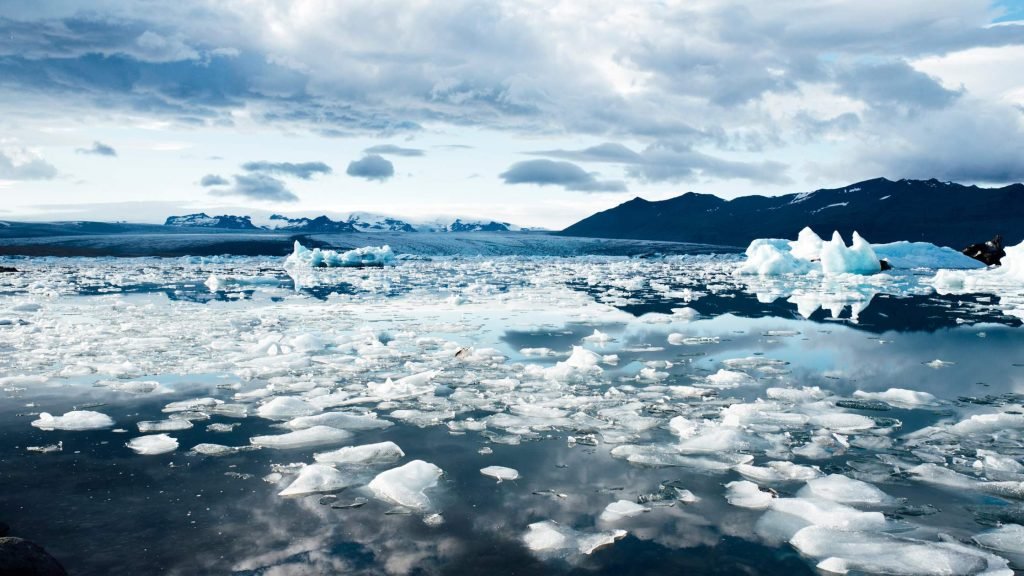
The melting of polar ice caps can have many negative impacts on the environment and human society. Some of the main impacts include:
1. Rising sea levels: As the ice caps melt, the water from the ice flows into the ocean, causing sea levels to rise. This can lead to coastal flooding and erosion, and can also contaminate freshwater sources.
2. Loss of habitat: Many animals that live in the Arctic and Antarctic regions, such as polar bears, walruses, and penguins, rely on the ice for survival. The loss of ice can make it difficult for these animals to find food and shelter and can lead to population declines.
3. Changes in ocean currents and weather patterns: The melting of ice can change the way ocean currents flow, which can affect weather patterns around the world. For example, the melting of Arctic ice can cause the jet stream to shift, which can lead to more extreme weather events in some areas.
4. Loss of biodiversity: The polar regions are home to a wide variety of plant and animal species that are not found anywhere else on Earth. As the ice melts, these species may become endangered or go extinct.
5. Economic impact: The melting of ice can also have economic impacts. For example, the loss of sea ice can make it easier for ships to navigate the Arctic, which can open new shipping routes. But it also can open new areas for oil and gas exploration, which could have negative environmental impacts.
Overall, the melting of polar ice caps is a complex issue with many potential impacts on the environment and human society.
Reading these shocking facts makes us aware of the actual environmental conditions & the hazardous effects. We are all responsible & we all should work together in minimizing & eliminating sources of pollution & find ways to beat it.
Together we can do this, and make this world a better place to sustain life. Nelda is such an tree plantation NGO in India, with the mission to make the world greener than how we found it. Join us!

